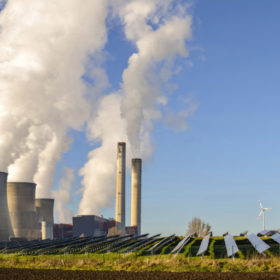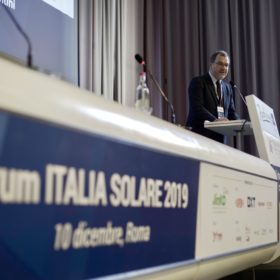CREO 2019: A roadmap for China’s energy system
As solar and wind power enter the post-subsidy era, the next few years will be critical for China’s energy transition with investors learning to navigate the uncertainties of market reforms. With the 14th five-year plan – touted as a watershed in China’s energy system development – in the works, a report has recommended clear targets for 2021-2025 in terms of solar and wind power deployment and a reduction of coal consumption.
The land that solar (almost) forgot
Almost all of the energy supplied in the Buddhist kingdom of Bhutan comes from 1.67 GW of hydropower capacity but with a rising population and energy demand, and an expanding economy, the 12 GW of solar the International Renewable Energy Agency estimates the Himalayan nation could host might reduce the risk of climate change-related blackouts.
Streamlining large scale solar crucial for Italian market
The Italia Solare Forum event held in Rome laid bare the difficulty of securing permits for large scale projects at national and regional levels. Fast-tracking the process for big solar parks appears necessary to get Italian PV back on track.
Residential solar set new US record in the last quarter with 712 MW
The U.S. residential solar market – and 15 states – are at record highs according to analyst WoodMac’s ‘don’t call it a comeback’ Q3 report, driven by new market forces. The research firm held its 2019 U.S. solar forecast at 13 GW.
CPIA: China will add 40 GW of solar in 2020
The China Photovoltaic Industry Association secretary-general has revealed the world’s biggest solar market is unlikely to add more than 30 GW of solar generation capacity this year after just 17.5 GW was installed to the end of October.
Power Ledger, Japan’s Kepco extend blockchain energy collaboration
Japanese utility Kansai Electric Power has extended a demonstration project with Australian P2P energy pioneer Power Ledger to track renewable energy certificates and trade PV-generated electricity.
Neural networks improving solar power forecasting
An international research team has developed a new approach for solar power forecasting that combines neural networks and pattern sequences for the first time. The performance of the new Pattern Sequence Neural Network (PSNN) was tested on an Australian data set that includes information from two years of forecasts. It can be used with different clustering and cluster-sequence extraction algorithms, and can be applied to multiple related time sequences
Solaredge brings its three-phase inverter with integrated memory interface to Europe
Solaredge wants to enable households have a higher solar self-consumption with its new product. The Israeli PV company’s solution can now be ordered in Germany, Austria, and Switzerland.
Europe on track for decade-topping 16.7 GW of new solar this year
Trade body SolarPower Europe’s preliminary statistics suggest this could be the continent’s best year for PV since 2010, with capacity additions set to soar 104% year on year. Spain is leading the way with an expected 4.7 GW of new solar, followed by Germany, with 4 GW.
Taiwanese government proposes solar tariffs of US$0.13-0.19/kWh
The draft feed-in tariff scheme should be approved by the end of the month. Payments for residential solar systems are expected to fall only 0.34% but those for utility scale solar may be reduced by 2.2%. An increase is set to be granted to projects in remote areas and also to those which rely on high-efficiency modules.










